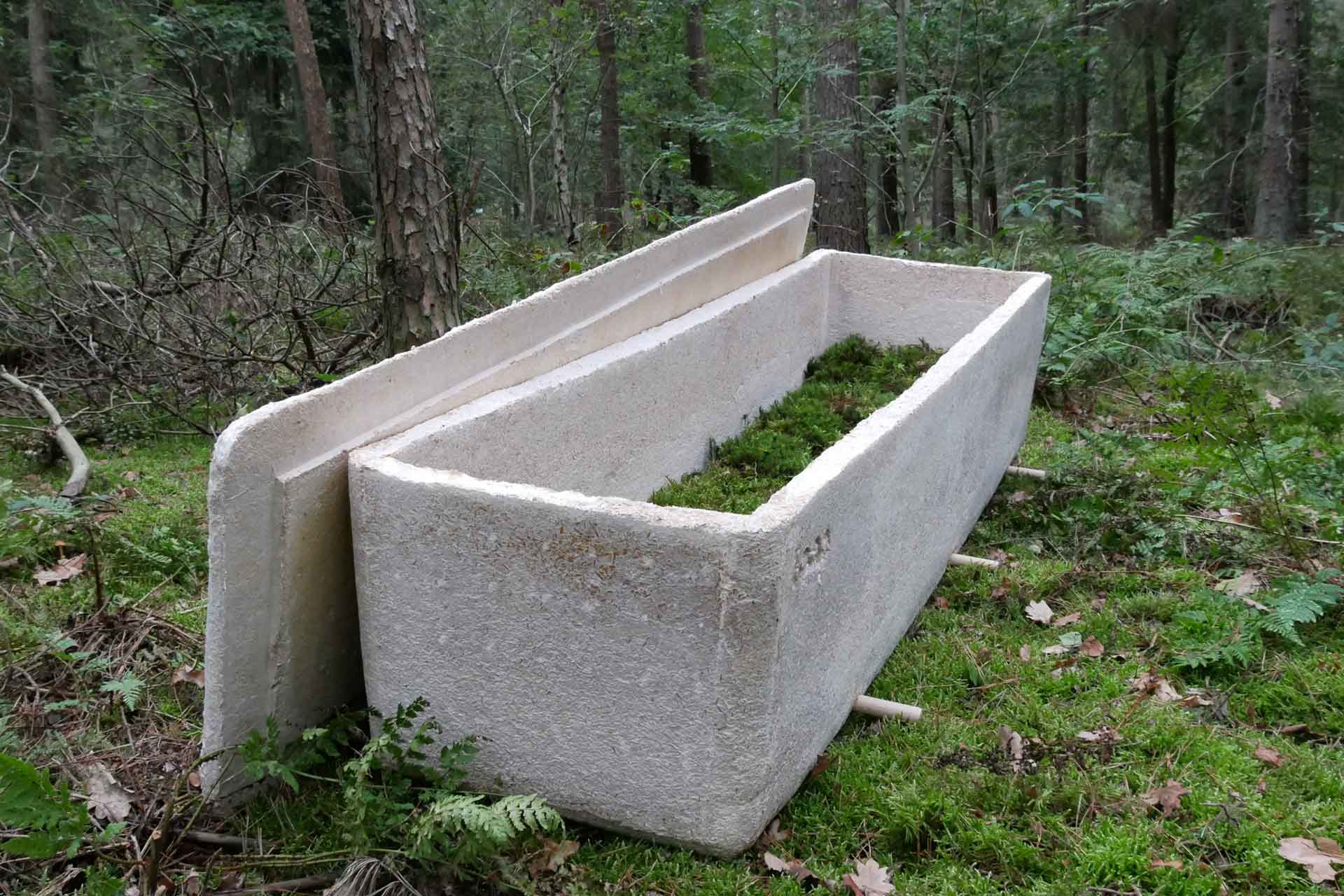
- HOME
- CULTURE
Magic Mushrooms: 5 Reasons Why Fungi Are The Future of Sustainability
From vegan leather to mushroom mansions
By | 2 years ago
What do biodegradable coffins have in common with meatless beef burgers or a sustainable Stella McCartney handbag? They’re all made possible thanks to one super-ingredient; the humble mushroom.
From the cute-as-a-button shrooms available at your local supermarket to the vast and ancient honey fungi which has lived in Oregon’s Blue Mountains for thousands of years, these mysterious organisms have always been a source of mystery. While they’ve historically been used to induce spiritual trips or craft medicines, today they’re being harnessed for another end; saving the planet.
In celebration of international mushroom month, we’re taking a closer look at how these fungi’s are being used to craft sustainable alternatives to everyday items. From packaging to plimsoles to plant-based meat, here are five reasons why mushrooms are the future:
1. Plant-Based Packaging
One of the reasons mushrooms are such a sustainable superhero is that farming them doesn’t require much room (or mush-room). Because they can be stacked vertically in growing facilities, a mere acre of land can produce a whopping million pounds of shrooms every year – which means less deforestation to clear growing space.
It’s no wonder they’re being used to combat one of our most environmentally harmful habits; unsustainable packaging. Ecovative Design use mycelium (or mushroom root) to create totally renewable, high performing packaging which biodegrades completely in just one month.
Considering one-third of all household waste is packaging, much of which is non-biodegradable and landfill bound, mushroom packaging could be a game changer. It’s available in the UK through the Magical Mushroom Company.

Stella McCartney Mylo, Photo @ Stella McCartney
2. Fungi Fashion
The world market for vegan leather is estimated to be worth $85 billion by 2025, as more and more fashion houses make the switch to cruelty free and sustainable fabrics.
Faux leather or unleather can be made out of anything from pineapple to cactus, but Mylo – the mushroom based leather produced by Bolt Threads – looks set to take over the industry.
Stella McCartney has already collaborated with Mylo to create the first vegan mushroom leather clothing. And with Adiddas and Lululemon also set to partner with the brand, there’s much more mushroom fashion soon to come.
The Sustainable Materials Are A Fashion Game Changer
3. Mushroom Meat
From Michelin star restaurants to McDonalds, everyone is jumping on the meatless meat bandwagon. Plant-based proteins are an easy, healthy switch that’s good for your body and even better for the planet. It’s no wonder they’re projected to take 10 per cent of the global meat market by 2030.
Mushrooms – with their naturally meaty flavour and texture – have been indispensable to many of these companies. Visionary producers Atlast cultivate speciality mushrooms that in their labs, while Australian mushroom based meat company Fable Foods is heading to the UK on the back of a hugely successful round of investment. And many popular plant-based proteins – including Quorn, who are behind KFC’s vegan burger – are just flavoured masses of fungal mycelium.
4. Shroom Rooms
Where better to enjoy your mushroom burger in it’s mushroom wrapper than in your very own mush-room? Ecovative – the same people responsible for mushroom packaging – are also developing mycelium-based building material Myco-board. Stronger than concrete, more insulated than fiberglass, and compostable to boot, this fungal foam could be the future of sustainable housing.
While we may be some way from shitake skyscrapers or a literal Portobello road, using Myco-board as insulation, flooring and furniture feels like a realisable goal. At the very least, it won’t be long until you can eat your mushroom meat sitting on an actual toadstool-stool.

Photo @ LOOP
5. Fungi Funerals
Believe it or not, mushrooms are even helping people to save the planet from beyond the grave. LOOP’s mycelium coffin ‘The Living Cocoon’ and Coeio’s mushroom-based Infinity Burial Suit both compost and disappear within weeks, meaning you can rest easy that your remains will enrich the earth rather than pollute it.
Sounds barmy? It may be a bit too far beyond the pale for most people. But when you consider that each year 3o million board feet of hardwoods and over 1.6 million tons of reinforced concrete go into producing caskets and vaults in the US alone, it doesn’t seem so crazy. All the same: maybe best to start out with a Quorn burger and go from there.
MORE:
The C&TH A-Z Of Sustainability



